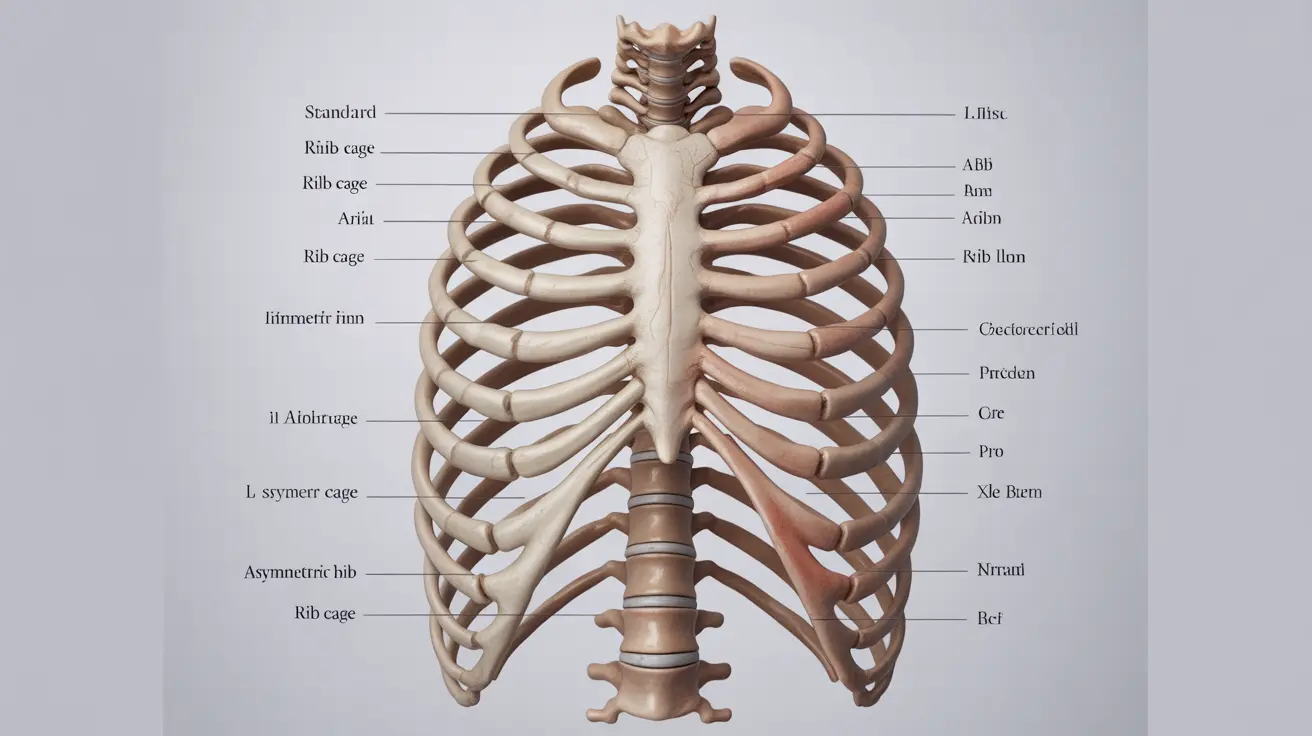An uneven rib cage, also known as rib cage asymmetry, is a condition where one side of the rib cage appears different from the other in terms of shape, position, or prominence. While this anatomical variation can be concerning for many people, understanding its causes, potential risks, and available treatments is essential for proper management.
This comprehensive guide will explore the various aspects of rib cage asymmetry, helping you understand when to seek medical attention and what treatment options are available to address any associated symptoms or concerns.
Common Causes of Rib Cage Asymmetry
Several factors can contribute to the development of an uneven rib cage:
Skeletal Conditions
- Scoliosis: A sideways curvature of the spine that can affect rib cage alignment
- Congenital abnormalities present from birth
- Previous injuries or trauma to the chest wall
- Bone development disorders
Postural Factors
- Poor posture habits
- Muscle imbalances
- Repetitive movements or activities
- Extended periods of sitting in incorrect positions
Understanding the Health Implications
While an uneven rib cage may cause concern, it's important to note that many cases are mild and don't significantly impact overall health. However, certain situations warrant attention, particularly when accompanied by:
- Breathing difficulties
- Chronic pain
- Limited mobility
- Reduced exercise tolerance
- Cardiovascular issues
When to Seek Medical Evaluation
Medical consultation is recommended if you experience:
- Persistent chest pain or discomfort
- Difficulty breathing
- Noticeable changes in rib cage appearance
- Impact on daily activities
- Worsening symptoms over time
Treatment Approaches and Management
Conservative Treatment Options
Many cases of rib cage asymmetry can be managed through non-invasive approaches:
- Physical therapy exercises
- Posture correction techniques
- Breathing exercises
- Core strengthening programs
- Manual therapy techniques
Medical Interventions
In more severe cases, medical professionals may recommend:
- Bracing (particularly for growing adolescents)
- Pain management strategies
- Surgical intervention (in rare, severe cases)
- Regular monitoring and assessment
Exercise and Physical Therapy
A structured exercise program can help improve rib cage symmetry and reduce symptoms. Key components often include:
- Targeted stretching exercises
- Core strengthening routines
- Postural awareness training
- Balance exercises
- Breathing techniques
Frequently Asked Questions
Is having an uneven rib cage dangerous or likely to cause serious health problems?
In most cases, an uneven rib cage is not dangerous and doesn't cause serious health problems. However, severe asymmetry may impact breathing or cardiac function, warranting medical evaluation and monitoring.
What common causes lead to an uneven rib cage and how can they be identified?
Common causes include scoliosis, poor posture, congenital conditions, and previous injuries. Healthcare providers can identify the cause through physical examination, imaging studies, and evaluation of medical history.
When should I see a doctor about pain, breathing issues, or posture problems related to an uneven rib cage?
Seek medical attention if you experience persistent pain, breathing difficulties, noticeable changes in rib cage appearance, or if the condition affects your daily activities or quality of life.
What treatment options are available to correct or manage an uneven rib cage?
Treatment options range from conservative approaches like physical therapy and posture correction to medical interventions such as bracing or, rarely, surgery. The appropriate treatment depends on the cause and severity of the condition.
Can exercises or physical therapy help improve rib cage symmetry and reduce associated symptoms?
Yes, targeted exercises and physical therapy can often help improve rib cage alignment, strengthen supporting muscles, and reduce symptoms. A qualified physical therapist can develop an appropriate exercise program based on individual needs.
While an uneven rib cage may cause concern, understanding your condition and working with healthcare professionals can help manage symptoms and improve overall quality of life. Regular monitoring and appropriate treatment can help ensure optimal outcomes for those affected by this condition.




